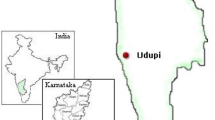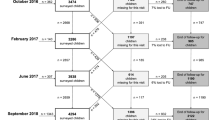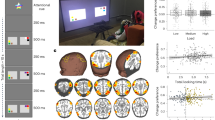Abstract
Background/objectives:
Stunting is significantly associated with lifetime morbidity and poorer cognitive outcomes in children. Although several studies have examined the relationship between stunting, catch-up growth and cognitive performance in young populations, this relationship has not yet been explored in school-aged children. In this study, we used data from three different nutritional intervention studies conducted over a 4-year period on school-age children in Bangalore, India to assess these relationships.
Subjects/methods:
A battery of cognitive tests was conducted before each intervention to determine whether stunting status at baseline was related to cognitive performance across four separate domains, and repeated after a 6-month period to assess whether changes to stunting status is related to cognitive advancement.
Results:
Results of independent t-tests showed that while stunted children had significantly poorer performance on short-term memory, retrieval ability and visuospatial ability tests (P=0.023, 0.026 and 0.028, respectively), there was no significant difference in the change in cognitive scores following nutritional interventions over a 6-month period between those who remained stunted and those who were no longer stunted (P>0.10).
Conclusions:
Evidently, stunting remains associated with cognitive ability in school-age children; however, the reversal of these effects in this age group may be quite difficult.
This is a preview of subscription content, access via your institution
Access options
Subscribe to this journal
Receive 12 print issues and online access
$259.00 per year
only $21.58 per issue
Buy this article
- Purchase on Springer Link
- Instant access to full article PDF
Prices may be subject to local taxes which are calculated during checkout

Similar content being viewed by others
References
UNICEF. Tracking Progress on Child and Maternal Nutrition: a Survival and Development Priority. United Nations Children’s Fund: New York, NY, USA, 2009.
da Luz Santos CD, Clemete APG, Jose V, Martins B, Albuquerque MP, Sawaya AL . Adolescents with mild stunting show alterations in glucose and insulin metabolism. J Nutr Metab 2010; 94: 3070–3076.
Luke B, Hediger ML . Perinatal epidemiology of metabolic syndrome risk factors. in Lipshultz SE, Messiah SE, Miller TL Pediatric Metabolic Syndrome. Springer-Verlag: London, UK, 2012, pp 57–81.
Branca F, Ferrari M . The impact of micronutrient deficiencies on growth: The stunting syndrome. Ann Nutr Metab 2002; 46 (Suppl.1), 8–17.
Sawaya AL, Martins P, Hoffman D, Roberts SB . The link between childhood undernutrition and risk of chronic diseases in adulthood: a case study of Brazil. Nutr Rev 2003; 61: 168–175.
Fuglestad AJ, Rao R, Georgieff MK . The Role of Nutrition in Cognitive Development. In: Handbook in Developmental Cognitive Neuroscience 2nd edn. MIT Press: Cambridge, MA, USA, 2008.
Benton D, Winichagoon P, Ng TP, Tee ES, Isabelle M . Symposium on nutrition and cognition: towards research and application for different life stages. Asia Pac J Clin Nutr 2012; 12: 104–124.
Holden KR . Malnutrition and brain development: A review. in Neurologic Consequences of Malnutrition. Volume 6, World Federation of Neurology seminars in clinical neurology. Demos Medical Publishing: New York, NY, USA, 2008.
Crookston BT, Dearden KA, Alder SC, Porucznik CA, Stanford JB, Merrill RM et al. Impact of early and concurrent stunting on cognition. Matern Child Nutr 2011; 7: 397–409.
Kar BR, Rao SL, Chandramouli BA . Cognitive development in children with chronic protein energy malnutrition. Behav Brain Funct 2008; 4: 31.
Watanabe K, Flores R, Fujiwara J, Tran LTH . Early childhood development interventions and cognitive development of young children in rural Vietnam. J Nutr 2005; 135: 1918–1925.
Walker SP, Chang SM, Powell CA, Simonoff E, Grantham-McGregor SM . Early childhood stunting is associated with poor psychological functioning in late adolescence and effects are reduced by psychosocial stimulation. J Nutr 2007; 137: 2464–2469.
Mendez MA, Adair LS . Severity and timing of stunting in the first two years of life affect performance on cognitive tests in late childhood. J Nutr 1999; 129: 1555–1562.
Crookston BT, Penny ME, Alder SC, Dickerson TT, Merrill RM, Stanford JB et al. Children who recover from early stunting and children who are not stunted demonstrate similar levels of cognition. J Nutr 2010; 140: 1996–2001.
Thankachan P, Rah JH, Thomas T, Selvam S, Amalrajan V, Srinivasan K et al. Multiple micronutrient fortified rice affects physical performance and plasma vitamin B-12 and homocysteine concentrations of Indian School Children. J Nutr 2012; 142: 846–852.
Muthayya S, Thankachan P, Hirve S, Amalrajan V, Thomas T, Lubree H et al. Iron fortification of whole wheat flour decreased anemia prevalence and improved iron status in Indian school aged children. J Nutr 2012; 142: 1997–2003. in press.
Muthayya S, Eilander A, Transler C, Thomas T, van der Knaap HCM, Srinivasan K et al. Effect of fortification with multiple micronutrients and n-3 fatty acids on growth and cognitive performance in Indian school children: the CHAMPION (Children’s Health and Mental Performance Influenced by Optimal Nutrition) Study. Am J Clin Nutr 2009; 89: 1766–1775.
Lohman TG, Roche AF, Martorell R . Anthropometric Standardization Reference Manual. Human Kinetics Publishers: Champaign, IL, USA, 1988.
World Health Organization. Expert committee on physical status. Physical status: the use and interpretation of anthropometry. World Health Organ Tech Rep Ser 1995; 854: 1–452.
Grantham-McGregor S . Can the provision of breakfast benefit school performance? Food Nutr Bull 2005; 26: S144–S158.
Malda M, van de Vijver FJR, Srinivasan K, Transler C, Sukumar P . Travelling with cognitive tests: testing the validity of KABC-II adaptation in India. Assessment 2010; 17: 107–115.
Kaufman AS, Kaufman LN . Kaufman Assessment Battery for children 2nd edn. Manual, Circle Pines, MN, USA: AGS Publishing, 2004.
Hughes D, Bryan J . The assessment of cognitive performance in children: considerations for detecting nutritional influences. Nutr Rev 2003; 61: 413–422.
Walter T, De Andraca I, Chadud P, Perales CG . Iron deficiency anemia: adverse effects on infant psychomotor development. Pediatrics 1989; 84: 7–17.
Grantham-McGregor S, Baker-Henningham H . Review of the evidence linking protein and energy to mental development. Public Health Nutr 2005; 8: 1191–1201.
Victora CG, Adair L, Fall C, Hallal PC, Matorell R, Richter L et al. Maternal and child undernutrition: consequences for adult health and human capital. Lancet 2008; 371: 340–357.
Blakemore SJ, Choudhury S . Development of the adolescent brain: implications for executive function and social cognition. J Child Psychol Psychiatry 2006; 47: 296–312.
Anderson SL . Trajectories of brain development: point of vulnerability or window of opportunity? Neurosci Biobehav Rev 2003; 27: 3–18.
Grantham-McGregor S, Cheung YB, Cueto S, Glewwe P, Richter L, Strupp B . Developmental potential in the first 5 years of life in developing countries. Lancet 2007; 369: 60–70.
Knudsen EI, Heckman JJ, Cameron JL, Shonkoff JP . Economic, neurobiological, and behavioral perspectives on building America’s future workforce. PNAS 2006; 103: 10155–10162.
Acknowledgements
Acknowledgments are extended to the all authors of the primary studies for their contributions to those nutrition intervention studies. We thank Dr Veena Satyanarayana for helping compile the tests scores in different studies to comparable domains. NS completed this project at St. John’s Research Institute, Bangalore with funding from the Harvard Global Health Institute. The funding for the studies used in this analysis was provided by entities that are acknowledged in each of the primary papers.
Author contributions
NS, SS, PT and TT analyzed and interpreted the data. NS drafted the manuscript. AVK, KS and TT reviewed the manuscript for intellectual content. T Thomas will act as the guarantor of the study. All authors approved of the submitted and published versions.
Author information
Authors and Affiliations
Corresponding author
Ethics declarations
Competing interests
AVK consults for McCain Foods Ltd. and compensation is directed entirely to charity. The remaining authors declare no conflict of interest.
Rights and permissions
About this article
Cite this article
Sokolovic, N., Selvam, S., Srinivasan, K. et al. Catch-up growth does not associate with cognitive development in Indian school-age children. Eur J Clin Nutr 68, 14–18 (2014). https://doi.org/10.1038/ejcn.2013.208
Received:
Revised:
Accepted:
Published:
Issue Date:
DOI: https://doi.org/10.1038/ejcn.2013.208
Keywords
This article is cited by
-
Early child health in an informal settlement in the Peruvian Amazon
BMC International Health and Human Rights (2016)
-
Stunted growth related to cognitive performance
Nature India (2014)



